Dive into the rich history of ancient Egyptian trade, covering the diverse goods traded, extensive routes, key trading partners, and the iconic trade ships used. Understand how trade shaped ancient Egyptian culture and society, and discover intriguing facts about their trading practices and their impact on their civilization.
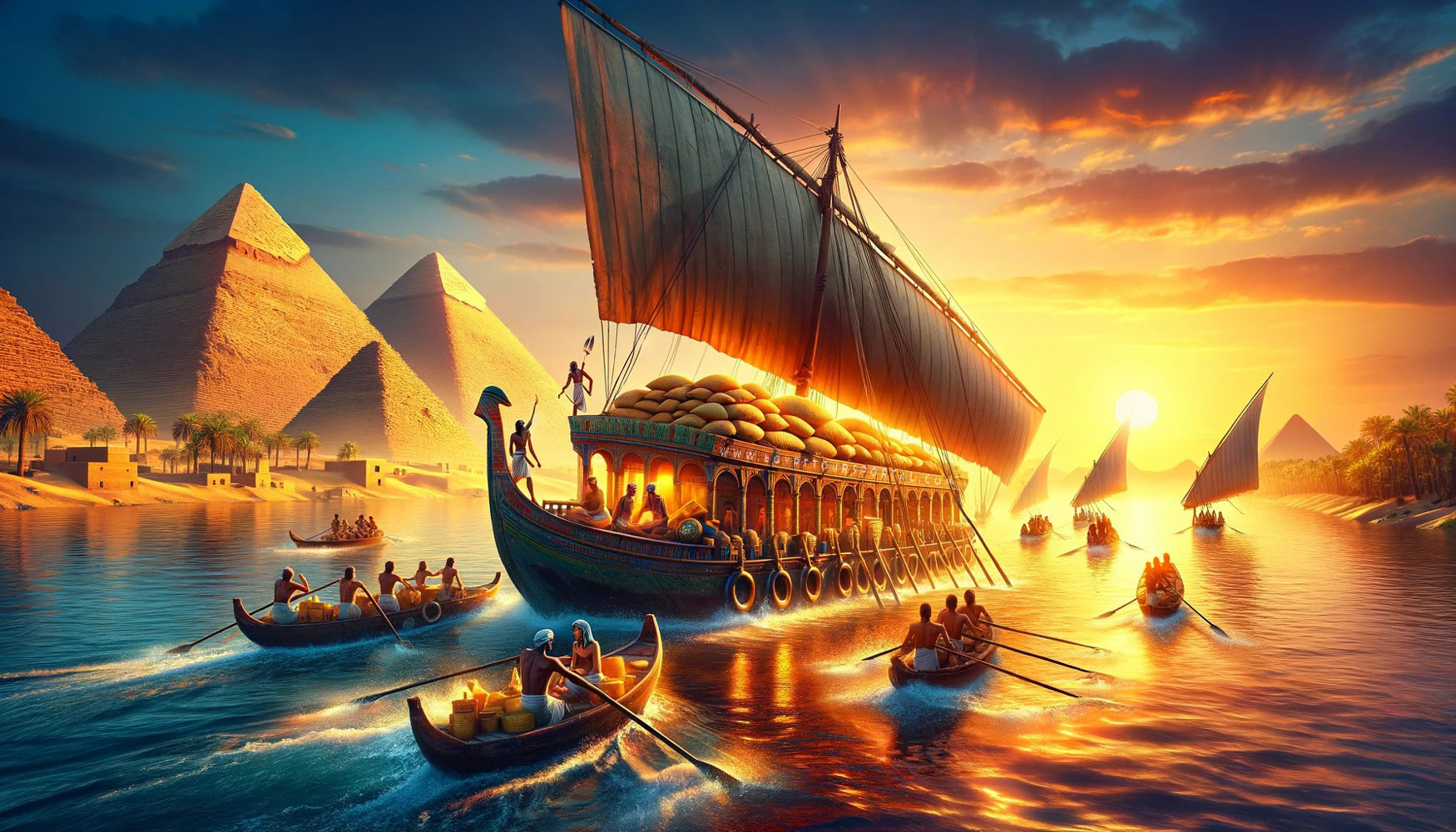
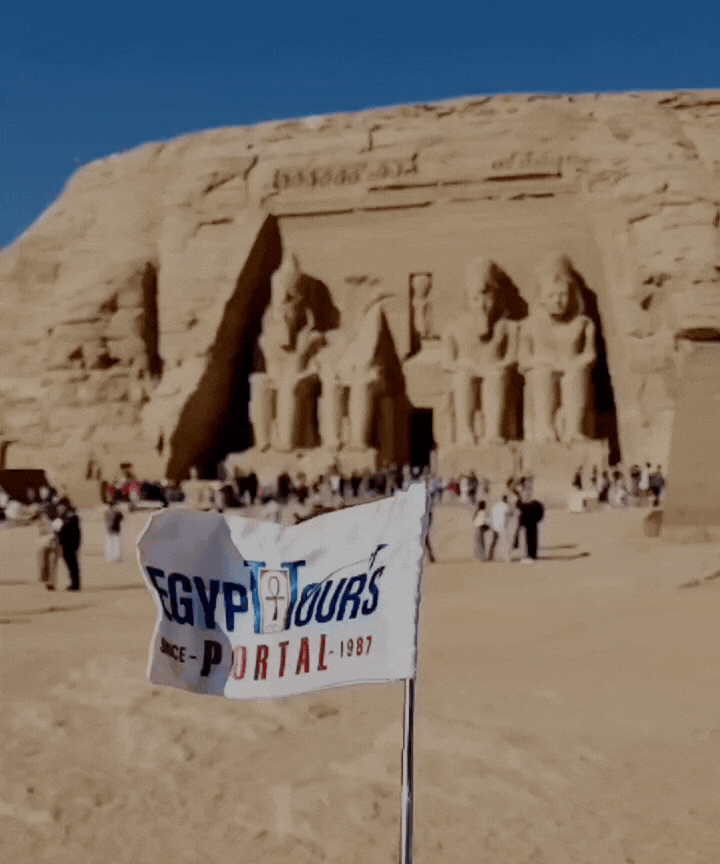
Ancient Egypt enjoyed an abundance of natural resources and wealth but wasn't able to achieve self-sufficiency, so it relied on trade, which is considered to be one of the most vital aspects of any civilization, whether it was on a local or international scale.
The geographic strategic location of the ancient Egyptian kingdom opened the door for international trade, which elevated the lives of everyone who took part in it. For three millennia, ancient Egypt traded countless goods with various kingdoms like Nubia, Kush, and Punt.

The history of the ancient Egyptian trade goes back to the time of the Early Dynastic period (3050-2686 BC), which marked the development of agriculture and animal husbandry. Then followed the Old Kingdom (2686-2181 BC), where trade increased because of the elevation of art and architecture and the centralized administration of agricultural products. In the middle kingdom of ancient Egypt (2134-1690 BC), Nubian gold and minerals became valuable trade goods. During the new kingdom of ancient Egypt (1549-1069 BC), the import of bronze and exotic woods plus the restoration of historic trade routes and networks, towards the end of the new kingdom between 672 BC and 332 BC, Egypt fell under the control and conquest of Assyria, Babylon, and Macedonia that brought new trade opportunities but was surrounded by great oppression of the Egyptian public.
During the Ptolemaic dynasty (332-30 BC), trade rose to a new level after the establishment of the city of Alexandria, which was considered a second capital of the Hellenistic times; the city was a symbol of art, culture, a foreign power, and trade center of Chinese silk, Asian gems, hardwood from northern Europe and spices from the far orient. The trade of ancient Egypt had its ups and downs, but it all came to an end after the death of Cleopatra in 30. After the Egyptian trade attracted traders from Phoenicia, Greece, Persia, and India, everything became under the control of the Roman Empire for many centuries to come.
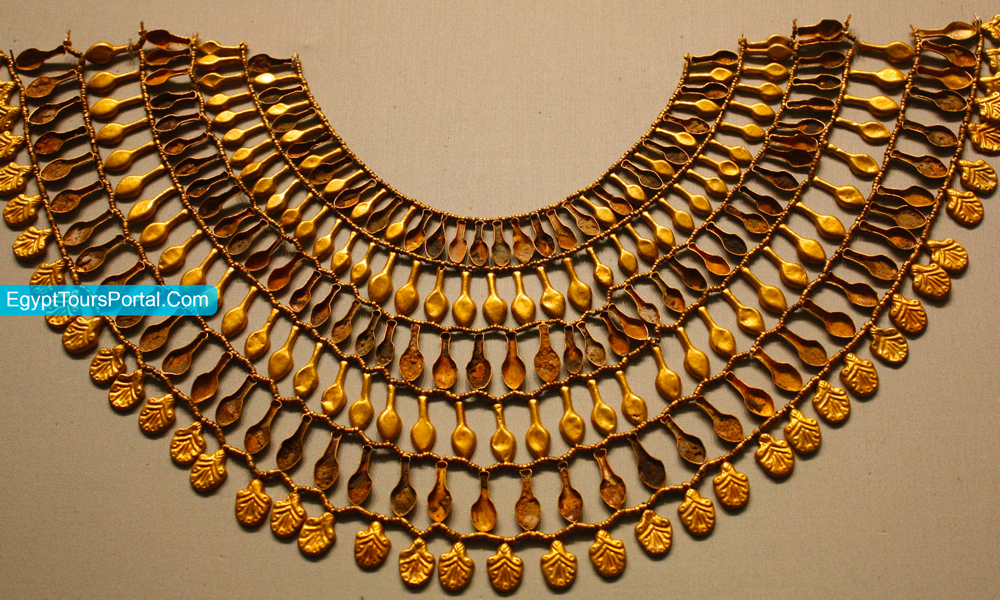
The types of goods they traded were diverse, reflecting Egypt's rich resources and the various needs and luxuries of the ancient world. Here are some of the primary goods ancient Egyptians used for trading:
Ancient Egyptians had most of everything they needed within their country's bordures, but their environmental condition prevented some goods from existing in a mass quality, like wood, which existed of inferior quality and was the main material used for the creation of ships, houses, and furniture, so in the old kingdom, Egypt established an economic relationship with the Byblos kingdom on the Lebanese coast which became one of its closest allies for two millennia. The ancient Egyptians imported cedar wood, which was used to build naval ships defending the country against foreign forces like the sea people. They also imported numerous varieties of hardwoods like ebony and fragrant wood from Africa.
Egypt didn't enjoy a rich quality of metal; it had a small number of gold deposits with little silver, iron, copper, and lead, which didn't fully satisfy the country's metallic needs. Egypt began the conquests of Nubia and the Sinia and exploited their gold and copper mines, which had positive improvements and international consequences. The ancient Egyptians shipped the copper from Cyprus, and they used significant amounts of gold that were traded with Asiatic kings to gain their political support in favor of the Egyptian empire. Asiatic copper was a natural bronze alloy that was produced using tin.
The ancient Egyptians took a major interest in precious stones and luxury goods. The land of the punt was the main source of resins of myrrh, frankincense, and fragrant wood, which was used as incense and the preparation of certain products. They imported lapis lazuli from the northern land of Kush in Bactria. From eastern Iran and Afghanistan, vegetable oils, eye paints, and cosmetics were imported. During the Roman era, glass products were manufactured in Alexandria. Many materials like Turquoise, gold, agate, carnelian, and other precious gems were carried on the Oxus road from the Persian Gulf overland to Egypt or by ships around the Arabian Peninsula or the Canal of Nile-Red Sea.
Many animal products from West and South Africa found their way to Egypt, like Ivory, ostrich feathers & eggs, and leopard and lion skins. Many cattle and animals were introduced to the ancient Egyptian kingdom, like horses, which appeared for the first time in the 13th dynasty and were highly famous in the time of the Hyksos; chickens were brought from India in the new kingdom, and camels became very common in Egypt during the Persian conquest. Also, a number of domestic animals, such as donkeys, goats, sheep, dogs, and cats, were introduced to Egypt in prehistoric times.
Egypt was the leading producer of grains in the ancient world, but they did not have enough corn, which was imported from the ancient kingdom of Lebanon. It also sold dates abroad all across the Roman Empire. Egypt was the only producer of papyrus in the Mediterranean region. It produced some sort of paper and remained the main writing material in Europe until the end of the Middle Ages, and it was marketed in the form of long rolls. Egypt also exported artifacts, as in Byblos of Levant statues and sarcophagi have been found, and amulets, scarabs, and rings were found in Malta, plus beads made from faience and torch holders. With the land of punt, Egyptian weapons, jewelry, and mirrors were exchanged with frankincense, exotic woods, and ivory.
With a wide array of dishes, Ancient Egyptians demonstrated their excellent culinary tastes. Read about their food traditions.
Read MoreAncient Egypt was successful in controlling the flow of goods all over the world from Africa to Europe and the Near East. They transported their merchandise by ship as in the Ptolemaic dynasty, and the lighthouse of Alexandria was constructed to symbolize the extreme value and importance of shipbuilding and sea trade as the lighthouse was used to facilitate and increase the goods transported from all the corners of Africa, but the ancient Egyptians also resorted to other methods as the limitations of the ships rigging prevented them from sailing into the wind and the storms of the Mediterranean and the red sea & the cataracts of the Nile. The alternative methods were the crossing of the eastern and western desert, camels and caravanserais were ideal, and the usage of chariots, which took full advantage of the wheel technology between 1674 BC and 1549 BC.
The concept of trade can be defined as an exchange of goods between merchants, which was solely handled by scribes as representatives of mainly the kings or the priests. Trade was organized by a central authority, and there was no trace of middlemen to profit from these exchanges. In short, there were no government-sponsored incentives for trade in ancient Egypt, as the king owned all the land and the entire produce. The king was ordained by the gods and served as the mediator between the gods and the public; he, therefore, was recognized as the land's legitimate steward. But in reality, from the time of the Old Kingdom onward, the Cult of Amun owned large tracts of land that were tax-exempt. Since there was no law prohibiting priests from engaging in trade, and the entire profit went to the temple instead of the crown, it allowed the priests to live as extravagant as royalty. The traders in ancient races, like the Asiatic merchants who traded Iranian goods of metal and precious stones into Egypt to protect the merchants and the trade, a police force and armed guards protected the caravans from theft, the border crossing, collected tolls and kept a close eye on everyone who might cause them harm and damage.

Trade was able to leave a lasting impact on ancient Egyptian society, art, and technology, plus the entire world, as trade made the whole world like a small village where traders and merchants took many routes across land and waters to export and import their goods. There used to be a historically significant land route that passed through Wadi Hammamat, thus connecting the Nile River to the Red Sea, dating back to pre-dynastic times. This pathway facilitated travel from Thebes to the Red Sea's Elim port and contributed to the growth of ancient cities along its route. During the Old Kingdom of Egypt (2700 – 2500 BC), the Darb el-Arbain served as a vital trade route for various commodities like gold, ivory, spices, wheat, animals, and plants. This route linked Kharga in the south to Asyut in the north, thus becoming a crucial passage between Nubia and Egypt. Egyptians displayed early maritime prowess, constructing ships around 3000 BCE through the innovative method of binding wooden planks and filling gaps with reeds. The Mediterranean Sea established trade with powerful civilizations across the Mediterranean, including Byblos (known for its cedar wood), and the Aegean islands provided access to new resources and cultural influences.
Many historical figures like Pharaoh Sahure of the Fifth Dynasty and Queen Hatshepsut engaged in maritime trades in all directions. Sahure dispatched ships to Lebanon for cedar and to the Land of Punt for myrrh, malachite, and electrum. Queen Hatshepsut famously organized expeditions to Punt for myrrh, expanding Egyptian trade to regions now known as modern-day Somalia and the Mediterranean. The roots of the Suez Canal's concept trace back to the ancient era, which aimed to link the Nile River and the Red Sea for strategic and commercial purposes with beliefs suggesting that Pharaohs Senusret II or III from the Twelfth Dynasty initiated an early form of the canal project which inspired the creation of the Aswan High Dam in the 60s.
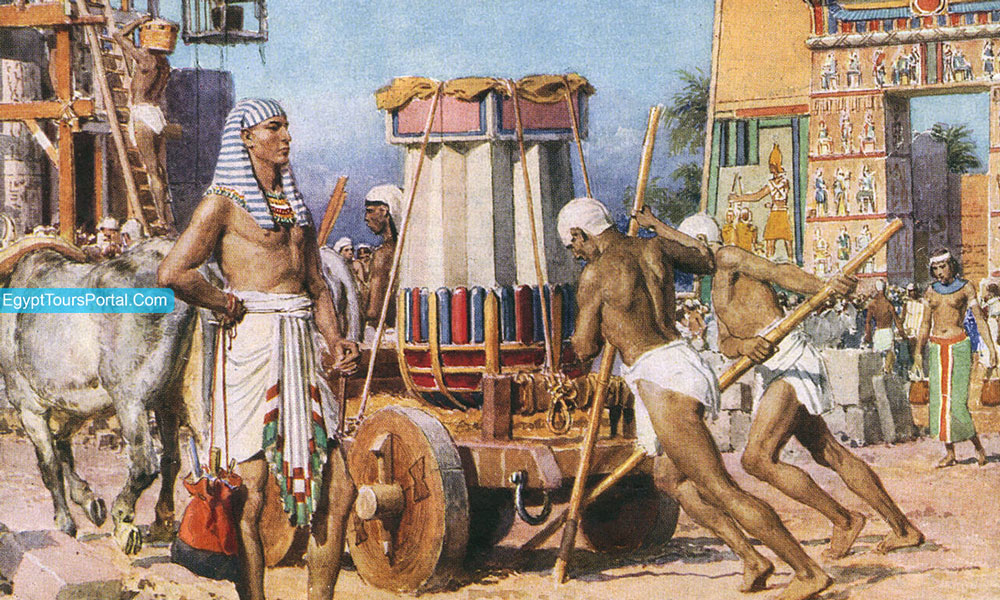
The ancient Egyptian traders established a massive network across Africa, the Near East, and the Mediterranean, where all kinds of goods were traded, and the fate of the world was changing for the better. Egyptian traders went all across Africa by land and water, which included Nubia, found in southern Egypt, where materials like gold, ivory, ebony, and precious stones were provided all the time. The land of punt in modern-day Somalia or Eritrea was a trade partner that offered Egyptians myrrh, frankincense, resins, and exotic animals like baboons and giraffes. Near East Africa, the kingdom of Byblos, present-day Lebanon, was a crucial partner for the Egyptians, providing cedar wood that was used in creating ships and coffins. The kingdom of Canaan was the main source of wine, olive oil, and textiles that enriched the lives of Egyptians and fueled their export trade.
The lands of Syria and Mesopotamia were the main providers of metals, glass, textiles, and even horses, plus the cultural and knowledge exchange was able to influence art, architecture, and religious beliefs on both sides. The connection between Egypt and the Islands of Aegean was deep, where pottery and papyrus were exchanged at that time. The Phoenicians were renowned traders in the Mediterranean and had trade relations with Egypt, exchanging goods like cedar wood, glass, and dyes. The Minoans from Crete were also part of the trading network with Egypt for goods like pottery, metals, and possibly luxury items. The one thing that ancient Egyptians traded with all their partners and neighboring countries included ideas and technologies.
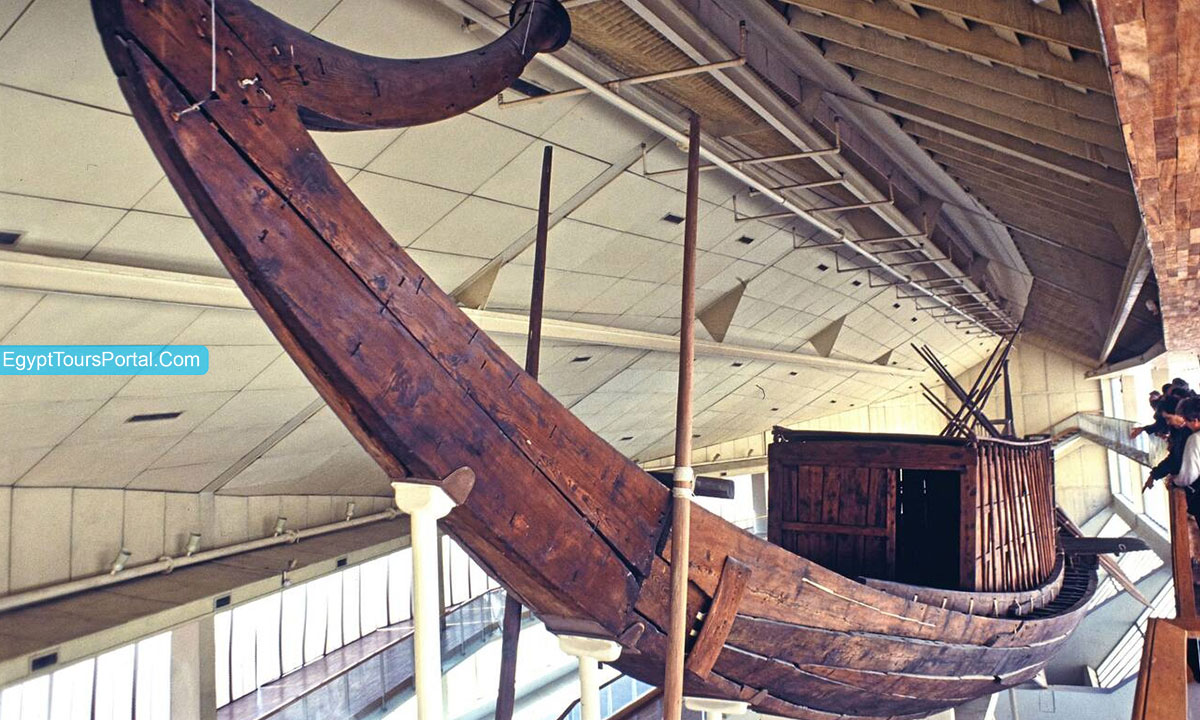
Egypt's strategic location between Africa, Asia, and Europe enabled it to become a significant trading hub in the ancient world for centuries as the Nile River facilitated this trade by providing a natural transportation route for goods to move in and out of Egypt plus the Red Sea, and the Mediterranean Sea enabled the exchange of these goods with their neighboring countries in the most ideal and swift manner. They used various types of boats and ships for trade, which included Papyrus Boats, which were among the earliest vessels used by the ancient Egyptians.
They were made from bundles of papyrus reeds lashed together and could range from small, simple boats to larger vessels used for trade along the Nile. River Boats, on the other hand, were designed for navigating the Nile River and were usually flat-bottomed with a simple design suited for calm waters. Seagoing Ships were built for maritime trade in the Mediterranean Sea as they were sturdier and capable of handling rougher waters. Cargo ships were used to transport goods, including foodstuffs and luxury items like gold, ivory, spices, and other materials for trade along the Nile and across the Mediterranean.
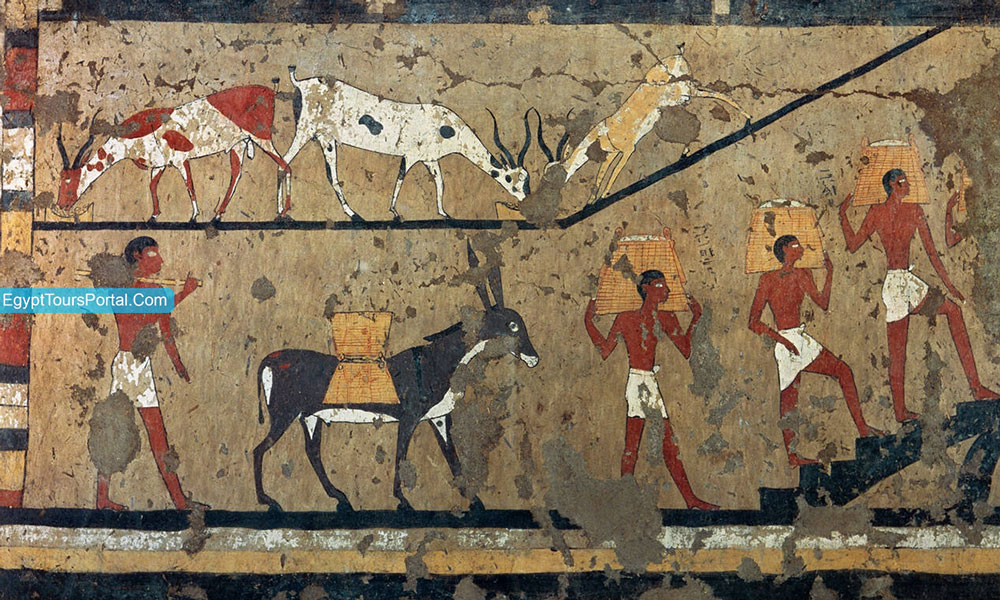
Trade was the magical door that opened a whole new world filled with endless riches that led to the entire evolution and development of the entire ancient Egyptian civilization by transforming Egypt into a powerful regional force. Trade played a highly important role in the flourishing of the economy by exporting and importing valuable resources like gold, papyrus, linen, grain, ivory, timber, and incense, thus bolstering the Pharaoh's wealth and enabling the construction of incredible monumental projects like pyramids and temples. Trade also offered the chance for all professionals of craftspeople, artists, and shipbuilders to harness and enhance their skills by working on different and more luxurious materials, thus fostering a vibrant culture of innovation and refinement in craftsmanship by developing new artistic styles, techniques, and technologies like shipbuilding, navigation, metallurgy, and agricultural methods.
Read more about how daily life in ancient Egypt was, discover the social classes, how have they discovered technology, and more.
Read MoreThe way the ancient Egyptians expressed their art changed with time through trade, as seen across the artistic and architectural works of the ancient Egyptians in Upper Egypt. Trade is able to create a bridge where it is easy to exchange ideas and beliefs about ancient deities, myths, and religious practices from neighboring cultures often infiltrated ancient Egyptian religion thus adding new layers of complexity, meaning, and diversity. Interactions with foreign traders enriched the Egyptian language with loanwords and contributed to the development of the complex hieroglyphic writing system, and the inspiration of the creation of other writing systems in different countries. Trade also led to the creation of many political and diplomatic relationships between many countries that made many periods of prosperity and peace. The spread and rise of trade brought changes in the rigid social hierarchy by creating the middle class, merchant class, and elite class.
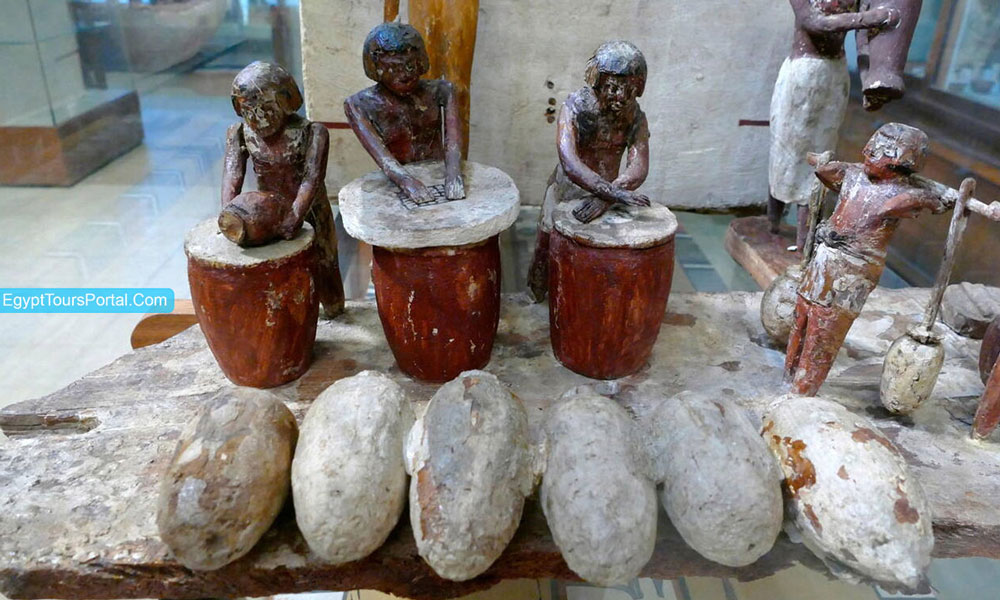
Egypt has always been the home of wealth, art, and beauty since the beginning of time and you have the chance to enjoy one of our Egypt private packages to discover all the hidden secrets of this great nation in Cairo & Alexandria cities and explore the true meaning of true beauty by boarding a Nile river cruise to the majestic cities of Luxor, and Aswan and enjoy the enchanting beaches of Hurghada.
Private 4 Days Cairo Tour Packages for South African Travelers 4 days Cairo Egypt To...
Tour Location: Cairo – Giza...
5 Days Cairo and Alexandria Tour Package For South African Travelers 5 days Cairo an...
Tour Location: Cairo/Giza/Alexandria...
6 Days Cairo, Luxor & Aswan Tour Package For South African Travelers 6 days Cair...
Tour Location: Cairo/Giza/Aswan/Luxor...
Amazing 7 Days Cairo and Hurghada Holiday for South African Travelers 7 Days Cairo &...
Tour Location: Cairo – Giza – Hurgh...
Throughout most of the final days of the Middle Kingdom and the entire New Kingdom, trade was the main focus of a number of notable leaders, including Pharaoh Hatshepsut (1479-1458 BCE), which are known for her daring expedition to Puntland (present-day Eritrea and Somalia), where she secured valuable resources like gold, incense-bearing trees, frankincense, and myrrh.
Ancient Egyptians traded with various civilizations and regions within their surroundings, including the Levant (modern-day Syria, Lebanon, and Palestine), Mesopotamia, Nubia, the Aegean, and the Land of Punt (present-day Eritrea and Somalia). Goods exchanged included gold, papyrus, linen, aromatic resins, grain, Timber, cedar, olive oil, wine, Lapis lazuli, textiles, metalwork, wild animals, pottery, and luxury items like jewelry, ebony, ivory, and spices.
In order to craft a model Egyptian trade boat, follow the next instructions, which start with gathering materials, which are Cardboard, glue, paint, dowels, string, fabric scraps, then cut out the hull, use cardboard to create a rectangular base and triangular sails.
Afterward, assemble the boat by gluing the hull pieces together and attaching the sails with dowels and string. Then, finish it by painting the boat, decorating it with fabric flags, and adding oars and a rudder.
The ancient Egyptian cargo ships traded first within Egypt across the Nile River in Memphis, Thebes, and Elephantine. Then, everyone ventured into the Mediterranean Sea across the ports of Byblos (Lebanon), Crete, Cyprus, and even as far as the Aegean. The ancient Egyptian cargo ships went across the Red Sea in the ports of Myos Hormos and Qawasr al-Amarnaand. The cargo ships also went to the land of Levant (Syria, Lebanon, and Palestine).
The ancient Egyptians perfected their trade due to its many benefits, including acquiring materials that they needed, gaining immense wealth, creating deep & profitable diplomatic ties, and importing very important materials like timber, gems, and metals that fueled construction and crafts. Trade also enabled the exchange of culture, knowledge, and ideas that enhanced & innovated the entire civilization.
Trade was the driving factor for Egypt's wealth, which spanned for various ages. Trade was responsible for sharing knowledge and creating cultural interactions that moved civilization forward. Trade led to the abundance of many exported priceless goods like papyrus, gold, and linen all over the world and brought in valuable commodities like gold, spices, precious stones, and exotic goods. This influx of resources increased wealth, improved standards of living, and facilitated the innovation of the entire country for many generations.
Egypt's geographical advantage makes it an ideal center for trade. Egypt has a strategic location between the Mediterranean Sea and the Red Sea, which made it a pivotal point for trade routes between Africa, Asia, and Europe. The Nile River acted as the transportation center for both transportation and irrigation, thus promoting agriculture and trade. The extremely fertile land of Egypt provided incredible leftovers for wheat and barley, which were used entirely for export. The mining of precious materials like Gold, copper, and turquoise attracted foreign trade.
The Nile River was the most vital means of transportation in Egypt as it allowed for the easy and safe transportation of goods throughout the kingdom of Egypt and facilitated trade with neighboring regions.
Trade opened up the whole world and provided ancient civilizations with access to resources, technologies, rare materials, and cultural exchange. It facilitated economic growth and innovation, the spread of ideas, art, and literature, fostering peace between nations, and the development of diverse societies.
The entire country of Egypt deserve to be explored with its every heavenly detail but there are places that must be seen before any other such as the breathtaking Hurghada's red sea, The wonders of Cairo the pyramids of Giza, the great sphinx, the Egyptian Museum, Khan El Khalili Bazaar, the wonders of Luxor like Valley of the Kings, Karnak & Hatshepsut temple and the wonders of Aswan such as Abu Simbel temples, Philea temple, Unfinished obelisk and The Wonders of Alexandria like Qaitbat Citadel, Pompey's Pillar and Alexandria Library. Read more about the best places to visit in Egypt.
If you want to apply for a Visa On Arrival that lasts for 30 days then you should be one of the eligible countries, have a valid passport with at least 6 months remaining and pay 25$ USD in cash, as for the E-Visa for 30 day you should have a valid passport for at least 8 months, complete the online application, pay the e-visa fee then print the e-visa to later be presented to the airport border guard. You could also be one of the lucky ones who can obtain a free visa for 90 days. Read more about Egypt travel visa.
Egypt has a variety of delicious cuisines but we recommend “Ful & Ta’meya (Fava Beans and Falafel)”, Mulukhiya, “Koshary”, a traditional Egyptian pasta dish, and Kebab & Kofta, the Egyptian traditional meat dish.
The best time to travel to Egypt is during the winter from September to April as the climate becomes a little tropical accompanied by a magical atmosphere of warm weather with a winter breeze. You will be notified in the week of your trip if the Climate is unsafe and if any changes have been made.
You should pack everything you could ever need in a small bag so you could move easily between your destinations.
We have been creating the finest vacations for more than 20 years around the most majestic destinations in Egypt. Our staff consists of the best operators, guides and drivers who dedicate all of their time & effort to make you have the perfect vacation. All of our tours are customized by Travel, Financial & Time consultants to fit your every possible need during your vacation. It doesn't go without saying that your safety and comfort are our main priority and all of our resources will be directed to provide the finest atmosphere until you return home.
You will feel safe in Egypt as the current atmosphere of the country is quite peaceful after the government took powerful measures like restructuring the entire tourist police to include all the important and tourist attractions in Egypt. Read more about is it safe to travel to Egypt.
Wear whatever feels right and comfortable. It is advised to wear something light and comfortable footwear like a closed-toe shoe to sustain the terrain of Egypt. Put on sun block during your time in Egypt in the summer to protect yourself from the sun.
The best activity is by far boarding a Nile Cruise between Luxor and Aswan or Vise Versa. Witness the beauty of Egypt from a hot balloon or a plane and try all the delicious Egyptian cuisines and drinks plus shopping in old Cairo. Explore the allure and wonders of the red sea in the magical city resorts of Egypt like Hurghada and many more by diving and snorkeling in the marine life or Hurghada. Behold the mesmerizing western desert by a safari trip under the heavenly Egyptian skies.
There are a lot of public holidays in Egypt too many to count either religious or nation, the most important festivals are the holy month of Ramadan which ends with Eid Al Fitr, Christmas and new years eve. Read more about festivals & publich holidays in Egypt.
Egypt is considered to be one of the most liberal Islamic countries but it has become a little bit conservative in the last couple of decades so it is advised to avoid showing your chest, shoulders or legs below the knees.
Arabic is the official language and Most Egyptians, who live in the cities, speak or understand English or at least some English words or phrases. Fewer Egyptians can speak French, Italian, Spanish, and German. Professional tour guides, who work in the tourism sector, are equipped to handle visitors who cannot speak Arabic and they will speak enough English and other languages to fulfill the needs of all our clients.
The fastest way is a car, of course, a taxi. If you are in Cairo ride a white taxi to move faster or you could board the fastest way of transportation in Egypt metro if the roads are in rush hour.
The temperature in Egypt ranges from 37c to 14 c. Summer in Egypt is somehow hot but sometimes it becomes cold at night and winter is cool and mild. The average of low temperatures vary from 9.5 °C in the wintertime to 23 °C in the summertime and the average high temperatures vary from 17 °C in the wintertime to 32 °C in the summertime. The temperature is moderate all along the coasts.
It is the home of everything a traveler might be looking for from amazing historical sites dating to more than 4000 years to enchanting city resorts & beaches. You will live the vacation you deserve as Egypt has everything you could possibly imagine.









